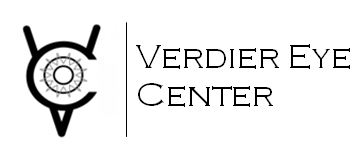Verdier Eye Center is excited to announce that we are now offering the cross linking procedure using Avedro KXL system, the only FDA approved cross linking device. For more information about cost and the procedure please contact our Cross Linking Coordinator, Paula Johnson, at 616-949-2001 extension 112.
Keratoconus is a medical condition which causes the cornea to become thin and weak resulting in an irregular shape or curvature. Eventually the patient’s vision becomes impaired and may interfere with day-to-day function. Cross-Linking has been proven effective in preventing disease progression and reducing corneal curvature in patients with Keratoconus.
Corneal Collagen Cross-Linking is a FDA approved surgical procedure in which the corneal epithelium (outermost layer of the cornea) is removed, Photrexa drops are applied to the surface of the cornea and the cornea is treated with ultraviolet light using a KXL cross-linking device. The goal of the treatment is to structurally stabilize the corneal tissue and delay or reduce future progression of Keratoconus. Your doctor will let you know if you are a good candidate for this procedure.
What patients need to know:
This cross-linking treatment is not recommended for women who are pregnant or lactating. It is not known whether this treatment can cause fetal harm or affect reproduction capacity. No data is present on the effects of Photrexa and Photrexa used in combination with the KXL device in relation to human milk, the effects on the breastfed infant or the effects on milk production. It is also not recommended for individuals under the age of 14 and over the age of 65 as these subjects were not included in clinical trials.
The treatment takes approximately 1 ½ hours.
The treatment is performed in an exam-room setting at Verdier Eye Center.
On the day of your treatment, have someone with you that can drive you home. You may also want to arrange to have a driver available for the 1-day post-treatment appointment as well.
There are pre-op and post-op medications used to prepare you for the treatment and help with healing after the treatment. Prescriptions of these medicines and instructions on what to do preoperatively will be given to you when the treatment is scheduled. Postoperative instructions will be given to you after the procedure. It is your responsibility to follow these instructions carefully. Medications are used to help manage pain, inflammation and help avoid infection. Medications are not always covered by insurance. It is your responsibility to find out what may or may not be covered by your insurance plan.
You will be asked to not rub the treated eye for 1 week after treatment. You may be asked to wear a protective eye shield over the eye when napping and sleeping until this cornea surface is healed.
Post-treatment symptoms:
You may experience the following symptoms related to your eye treatment… eye pain, irritation, discomfort, dryness, redness, light sensitivity, increased tearing, eye lid swelling, a temporary decrease in vision, glare/halos in vision, an increased risk of infection (while the front surface of the eye heals), possible decrease in depth perception. You may also experience non-eye related symptoms of headache, nausea and dizziness. We expect these symptoms to improve within the first few weeks after the treatment. Patients may want to arrange to have 2-3 days off of work/school. Rest and sleep are the best ways to encourage your eye to complete the initial healing stage. Use this opportunity to relax and to slow down. Sunglasses are recommended for patients experiencing light sensitivity.
A bandage contact lens may be placed in the eye at the end of your treatment. The contact lens is meant to help with pain management only (much like a bandaid over a wound) and will be removed when the doctor feels necessary. If it falls out before your exam with the doctor, do not try to re-insert it. Continue to use your post-operative medications as directed.
During the first week: You may continue normal shower/bathing routines. Try to avoid getting soap in the eye as it can cause irritation. Do not rub the eye. Avoid dusty/dirty/smoky environments for at least 1 week. Avoid swimming, hot tubs and eye makeup up to 1-month post-op.
Appointments following the treatment:
You will be instructed when you should return for follow-up exams. The normal schedule following treatment is: 1 day, 3-7 days, 1 month, 3 mos., 6 mos. and 1 year with a minimum of yearly exams thereafter. The doctors at Verdier Eye Center will instruct you on when it is safe to resume contact lens wear and when you should return to your primary eye doctor.








